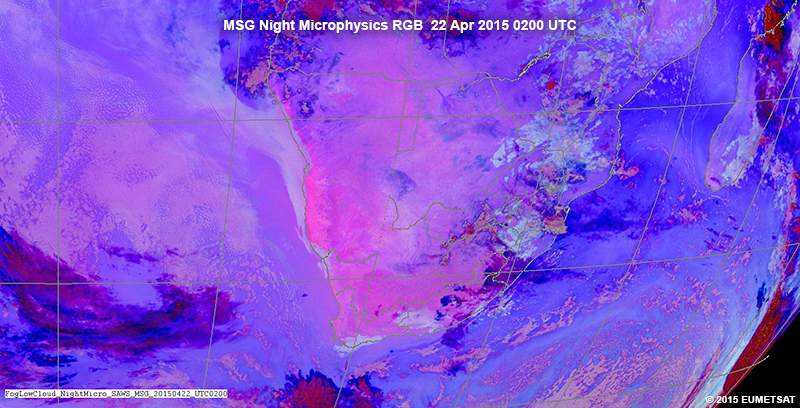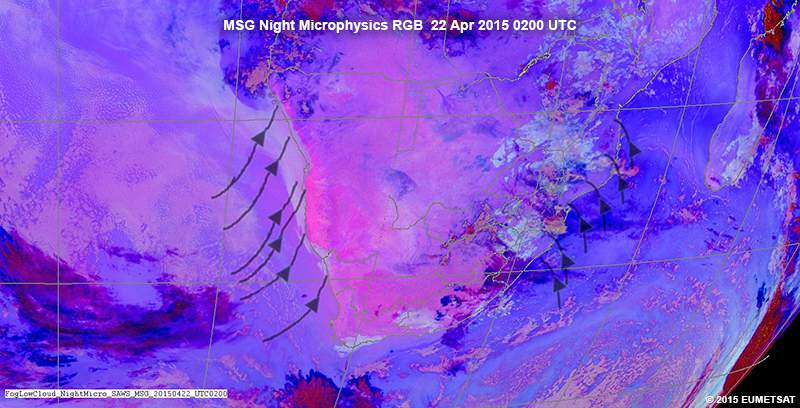Dominant Wind Flow
Question
Use the drawing tool to draw the dominant wind flow along the coastline of Namibia and the east coast of South Africa and Mozambique on 22 April 2015 0200 UTC.

| Tool: | Tool Size: | Color: |
|---|---|---|
High pressure systems, which are semi-stationary along the west coast of southern Africa, result in light to moderate south-westerly flow in the area along the coastline of South Africa and Namibia. As this warm, moist air travels over the cold Benguela current that lies just offshore, the air condenses and advection fog occurs over extensive areas of the coastline.
When a cold front has passed southern Africa, the Atlantic high goes through the process of “ridging” where the pressures along the South African east coast and Mozambique coast increase rapidly over time. This ridging process results in cool, moist air being forced onto the coast, often leading to low cloud along the coast and adjacent interior. The topography over the eastern parts of South Africa, Lesotho, Swaziland, and Mozambique effectively “trap” the low cloud and confine it to the coastal belt and slightly inland.
When we have a stationary high over the southern parts of the continent, the air is generally very stable with lots of subsidence and light winds. If there's been a ridging high or recent precipitation in the region, radiation fog tends to develop depending on the topography as the skies clear and overnight temperatures drop.
